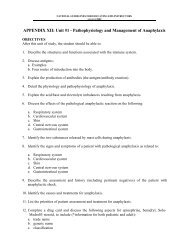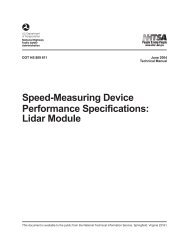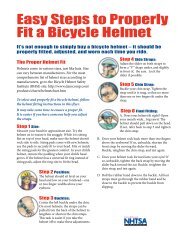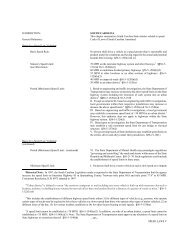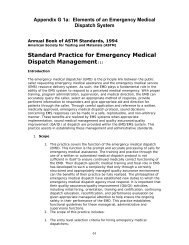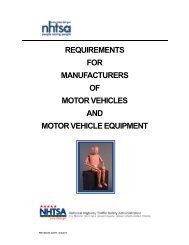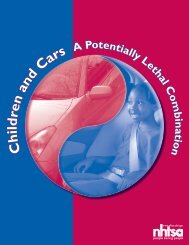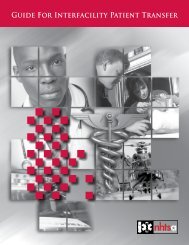Memorandum - NHTSA
Memorandum - NHTSA
Memorandum - NHTSA
Create successful ePaper yourself
Turn your PDF publications into a flip-book with our unique Google optimized e-Paper software.
IV- 1 9<br />
than 3 inches off the ground. The outer barrier is the only safety device which can prevent a<br />
wheelchair occupant from accidentally falling from a raised platform and research has shown<br />
electric wheelchairs are capable of climbing over some barriers which are in use today. Lifts ( an<br />
achieve a height of 40-50 inches off the ground, depending on the bus‘s floor height with the<br />
result that the top of the head of the wheelchair occupant could be a total of 90-100 inches off the<br />
ground. A fall could cause serious injury. All lifts are designed with a wheelchair retention<br />
device regardless of intended vehicle GVWR. The Final Rule requires a dynamic test,<br />
employing a WC test device, to prevent the WC from climbing over the outer barrier, and an<br />
overload strength test to prevent the WC crushing, bending or plowing-through for the<br />
wheelchair retention device.<br />
In their final guidelines issued September 6, 1991,the Access Board did not specify a safety twt<br />
for the outer barrier or WC retention device, but deferred to <strong>NHTSA</strong>’s expertise, as the agent!:<br />
was planning to issue proposed safety standards for lifts. In the Access Board’s final rule it is<br />
stated (pg. 45535), “...the Board feels that <strong>NHTSA</strong> is the appropriate agency to define safety<br />
tests .’,<br />
New WC Retention Test Method<br />
The WC Retention Device or outer barrier can be defeated by (a) WC climbing, (b) loss of<br />
strength and rigidity or (c) WC tipping. The WC retention device test is designed to address t le<br />
first two failure modes: (a) if traveling too fast, in the rearward direction, the large wheels of tine<br />
wheelchair can climb-up and over the outer barrier resulting in occupant injury and (b) if



